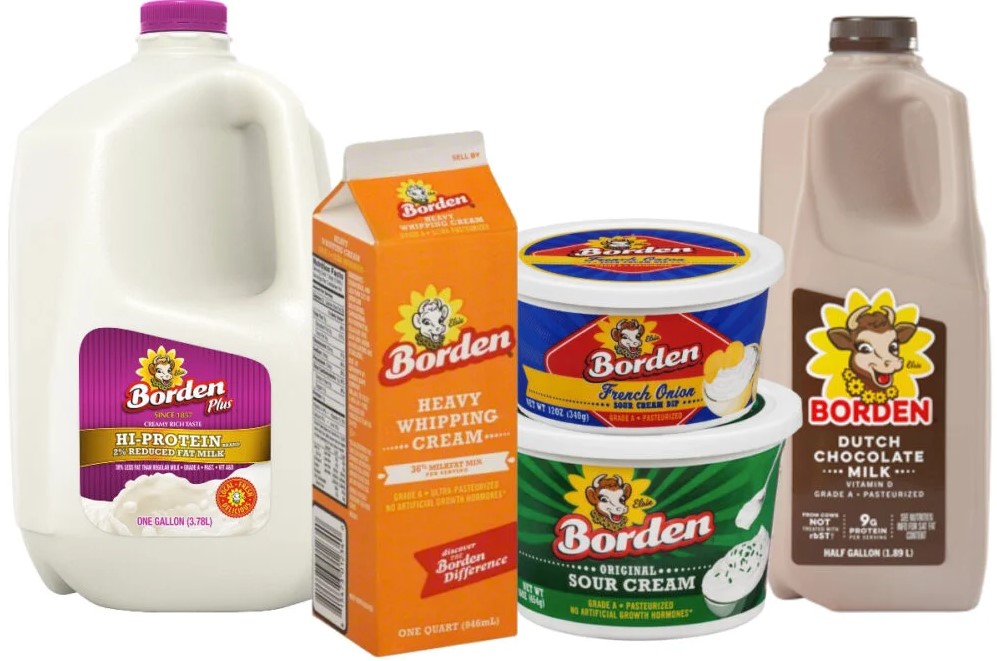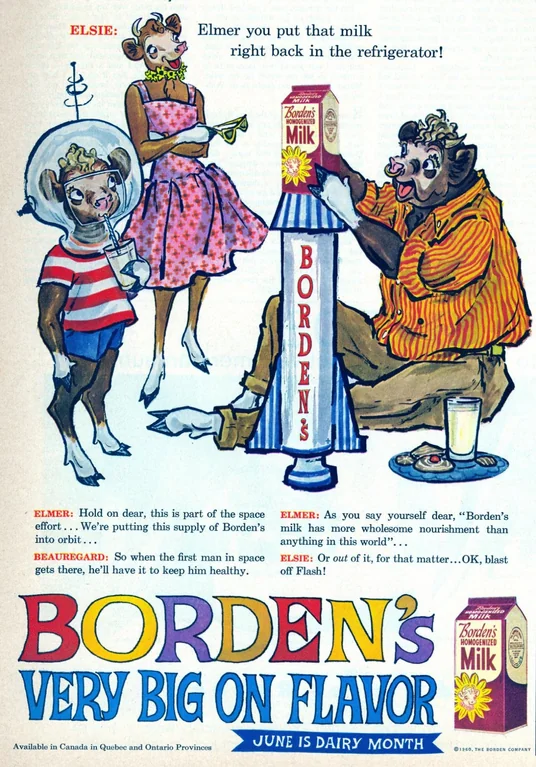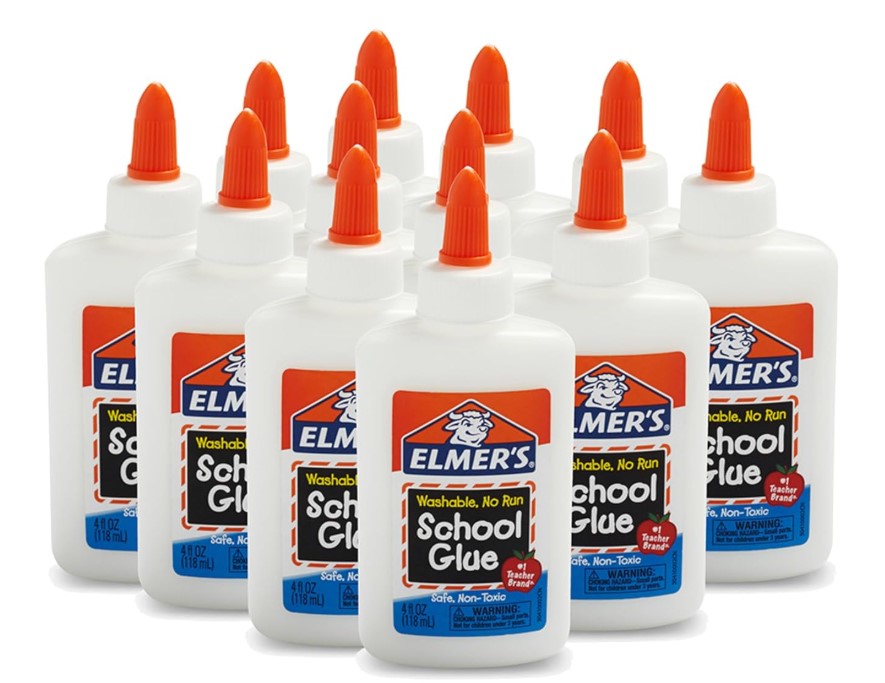The Bovine Unity of Milk and Glue?
Pictured above is a suite of dairy products from Borden, an American foodstuffs company founded in 1857. The company started off selling condensed milk, making a name for itself under the name “The New York Condensed Milk Company.” (It wasn’t a very creative name.) In 1885, per the company’s website, “the company pioneered the use of glass milk bottles,” and ultimately changed its name to the Borden Company to honor its founder, Gail Borden. But it really took off in 1936 when the company introduced its now-famoous (sorry) mascot, Elsie the Cow, putting a bovine face across its product line.
And because of Elsie, today’s kindergarteners eat glue.
Okay, probably not. But milk and glue are still related — at least, in the fictional universe of mascot cows.
Elsie the Cow became a popular American mascot shortly after her introduction, and that popularity led Borden to expand her storyline. In 1940, the world was introduced to her husband, and then a few years later, to their teenager named Beulah. In 1947, the couple welcomed a baby to their family named Beauregard, and then had two twins — Larabee and Lobella — a decade later. Here’s an ad from the 1960s featuring Elsie, her husband, and Beauregard — and pay attention to her husband’s name.
If you can’t read the small text, his name is Elmer, or officially, Elmer the Bull. And you’re probably familiar with him in another context, as see below:
Yep, that’s Elmer’s Glue. Elmer the glue mascot and Elise the dairy mascot are husband and wife.
By the 1940s, the Borden Company had expanded beyond milk — it was a manufacturing and packaging conglomerate, selling everything from printer ink to fertilizer, and by the 1950s, had a significant chemical division. In the late 1950s and early 1960s, according to Syracuse University, “Borden was manufacturing seven percent of all domestically produced PVC,” hardly something one associates with milk or sour cream. And in 1951, the company began selling glue “in a white squeeze bottle with an orange twist cap. The product was renamed Elmer’s Glue-All, and Elmer’s face and name were prominently featured in the new logo,” according to America Comes Alive. Elmer, who had previously only appeared on dairy ads along with his wife Elsie, was effectively on loan to the chemical division to help their glue stick, pardon the pun.
It worked. Elmer’s Glue became a popular enough produce that the Borden spun off its glue-making division in 1999, making Elmer’s its own company. In 2015, Elmer’s was acquired by Newell Rubbermaid for $600 million. The same good news can’t be said for Elsie and Borden’s. The Borden Company ceased operations in 2001 and it’s successor company, the Borden Dairy Company (founded in 2009) filed for bankruptcy in 2020 — although it is still in operation.
How this all impacted marital relations in the Elsie household has gone unreported.
Bonus fact: In 1998, scientists at SeaWorld San Antonio noticed that an unhatched penguin egg was somewhat crushed, putting at risk the penguin-to-be inside. Elmer’s Glue solved the problem. Per a local press report, a SeaWorld employee “applied a liberal coat of Elmer’s Glue-All to prevent the egg membrane from drying and ripping,” giving the penguin fetus enough time to incubate. The glue was so strong that the baby penguin couldn’t break through itself when it was time to hatch, but SeaWorld helped him there, too. And when it came time to name the penguin, SeaWorld went with the obvious choice: Elmer.
From the Archives: Cereal Killers: Check out the bonus item.



